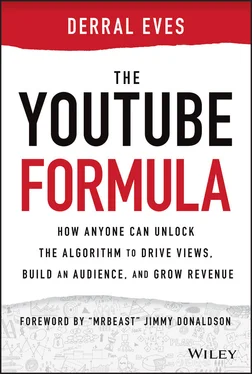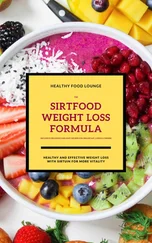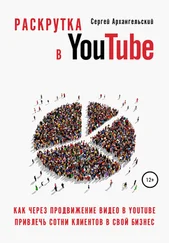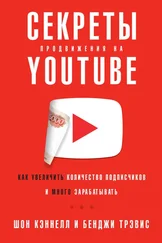It's important to note here that YouTube users weren't doing this sneakily or maliciously. They just wanted to share things they loved, and it was so easy to do. Do you remember Napster from the turn of the century? For those of you born in the 2000s, let me tell you a story.
Imagine a world where you couldn't listen to your favorite music on demand. The only way to hear your favorite song was to sit by the radio all day, waiting. If you wanted to listen on demand, you had to buy the entire album that included the one song you wanted to hear. Then along came Napster. Napster was the original widespread file‐sharing platform. Like, the pioneer of all digital media sharing on the Internet. Audio files, mostly songs, were shared as MP3 format files, and anyone could download any file for free. FREE! This was huge for music fans all over the world—the people loved Napster. Who wouldn't want unlimited access to their favorite bands for exactly zero dollars? Well, I guess not quite everyone was a Napster fan … namely, anyone who should be making money from music sales.
If you don't know the rest of the story, I bet you can guess what happened next. Lawsuits. Shut down. No surprises here. Actually, just before Napster was created, Bill Clinton, then‐president of the United States, had signed the Digital Millennium Copyright Act (DMCA) into law in 1998. The DMCA has regulated digital copyright issues and reinforced offender penalties ever since. (However, websites hosted outside the US are regulated by the United Nations World Intellectual Property Organization (WIPO).) What happened with Napster set the stage for media sharing regulation from that point forward.
YouTube could have looked at companies like Napster as examples of what not to do, and implemented their Content ID system from the time they opened up shop in 2005, but they didn't. In March 2007, a little company called Viacom, along with several others, sued Google and YouTube for $1 billion worth of copyright infringement issues. Reuters reported that YouTube was only taking copyrighted content off the site after a copyright owner had requested it, but there was nothing being done on the front end to prevent that content from being uploaded to begin with. Further, the lawsuit claimed that YouTube knowingly let this happen because they were making money on all that content.
The Content ID system wouldn't be implemented until 2007, the beta in June and full rollout in December. The ID system would attach a unique “digital fingerprint” to new uploaded content. Content could then be tracked and measured against already existing copyrighted content so YouTube could catch infractions.
Now that the law had been involved, YouTube had to settle some things for copyright holders. First, they literally had to settle that hefty lawsuit (the terms of settlement were undisclosed), but they also had to settle how they would proceed from there, and the Content ID system was the answer. I can't stress enough how monumental this was to YouTube's success. YouTube likely would have followed the fate of the original Napster and been shut down if the Content ID system hadn't been implemented, and a lot of creators and businesses like you and me would be doing something else. It was a total game changer.
In 2007, while the big copyright problem was simmering down, YouTube added two features that would make a similarly huge impact on its future. These features would be problematic in some ways, but also they would significantly change advertising and how creators could make a living from YouTube. Which features could be this consequential? (1) In‐video advertisements and (2) the Partner Program.
Advertisements on YouTube have evolved a lot over time. They used to be display ads or they appeared underneath the content, but with these changes, ads would pop up right in the content where the viewer was looking. And now the creator of that content could be compensated via ad revenue sharing. This is how the YouTube Partner Program began. Creators became super motivated to make good content that would get more viewers watching, because now, more views equaled more money. Creators and businesses really wanted to be YouTube Partners!
Unfortunately, this also meant that creators realized they could use tactics to get people to click on their videos, even if those tactics were divertive. Their aggressive “bait‐and‐switch” strategies included misleading titles, sensational thumbnails, and superficial content that strayed from the original purpose of the video. They wanted to get people to click on their videos at any cost so they could produce revenue from the ads being integrated with their content.
Let's not forget the first member in the YouTube ecosystem here: the viewer. This new ad sharing program created a big problem with viewer satisfaction. People began spending less time on YouTube because of the in‐your‐face ads and because of clickbaiting that hinted at what they were looking for but actually didn't satisfy that end at all in the content itself. In short, viewers felt tricked and unsatisfied.
In addition, many YouTube viewers got angry at these “sell‐out” creators who ran ads in conjunction with their content. They even went so far as to join channel boycott movements against creators. Seeing ads today is just part of the online experience, but back then, it was such a big deal that it interrupted the ecosystem.
As you can see, the integration of the Partner Program further complicated YouTube's delicate ecosystem. Keeping advertisers happy was an obvious priority because that's where the money came from, but YouTube also had to keep creators and viewers happy to achieve this, and the task was proving to be extremely difficult. Creators wanted their fair share in ad revenue without being labeled a sell‐out, and viewers wanted to watch content without feeling tricked or sitting through ads on every video.
Let's pause here for a minute. Before we run away with all the problems the Partner Program created, I want to emphasize how monumental its existence was. Google had pioneered advertisement revenue sharing with its AdSense program, and they implemented that program with YouTube. They took it to another level going from display ads to video ads, because video ads were more effective. They could charge advertisers more money for video ads, so YouTube made more money this way. Because YouTube didn't create their own website content, they had to incentivize creators to make good content that would get people coming to the platform.
AdSense was the origin of advertisement revenue sharing. This was absolutely uncharted territory! It was like the great California gold rush, but it was the gold rush for digital marketing in the twenty‐first century. Companies had never offered a portion of their revenue to the general public before!
YouTube said, more or less, “Hey folks, if you make good content that viewers will come and watch on our website, we'll share some of the advertisement money we get with you.”
And creators were like, “Wait, really? You mean I can get compensated for my hobby? Potentially earning enough that I can replace my boring nine‐to‐five income doing something I actually like, and can make more money doing? Well, then I'm going to make the best darn videos you ever saw!” And the gold rush was on. The channel owners grabbed their pickaxes, installed sluice gates, and started panning for gold.
So many creators, businesses, and advertisers saw the potential for massive payout with ad sharing, and they wanted in. The risk was that they might not actually make any money if they didn't get viewers, but the opportunity was worth the risk, and it paid off big for so many of them. This was a genius move by YouTube! They were enlisting a worldwide army of creators to do the grunt work to get visitors to their website for a piece of the revenue. Channel owners were ready to compete against each other for a chunk of the gold.
Читать дальше












